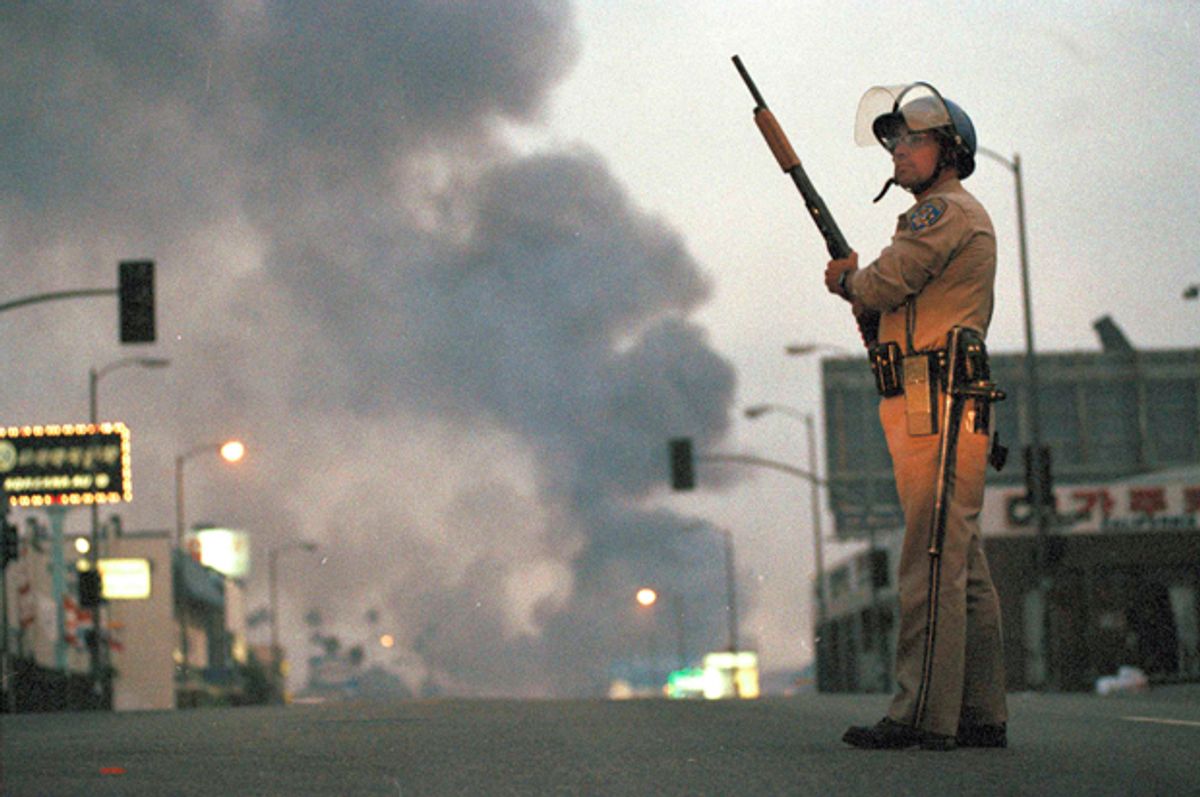When UCLA sociologist Darnell Hunt watches television coverage of the unrest in Baltimore, he feels like he’s flashing back two decades, when the Los Angeles riots erupted in what used to be called South Central over of a high-profile case of police brutality. The death of Freddie Gray while in police custody has too many uncomfortable parallels to the police beating of Rodney King.
But the parallels are just as close, Hunt says, if you watch the way the both events played out on television. “If you looked at footage from Baltimore and compared it to footage from L.A. in 1992, it’s identical,” he says. “If you didn’t know the date or location, you’d think it was the same event.”
Hunt was a graduate student in Los Angeles in the early ‘90s, wondering how to focus his dissertation, when the riots that followed the acquittal of the police who beat Rodney King broke out. Those began on April 29 -- 23 years ago, almost to the day. He decided to write about the divergence between media coverage of the riots and the way television news shaped our sense of reality. Because Hunt drove down to see the action firsthand, around Florence and Normandie, he could tell that people watching burning store fronts and overturned cars on TV weren’t getting the full picture. The work led to his 1996 book, “Screening the Los Angeles 'Riots': Race, Seeing, and Resistance.”
Television news is using the same frame for Baltimore that Hunt saw in 1992: Irresponsible criminals acting out, recklessly damaging property and destroying communities. Back then, he says, “When Latinos were involved, they were assumed to be illegal aliens: Criminality was superimposed over the whole thing.”
“The news coverage of civil unrest is pretty uniform,” Hunt says. “There aren’t many innovations in how mainstream news has covered unrest, going back to the ‘60s.”
Media coverage has changed in one key way since the '60s, though — TV and other media outlets have responded to calls from both left and right not to incite further violence. “Since the ‘60s, the news media has overcompensated,” he says, “taken it upon themselves to advocate for calm in the midst of disorder, instead of doing journalism, which is to really get to the bottom of what’s going on. You see a lot of editorials masquerading as news.”
When he went to the ’92 riots in South Central, Hunt saw plenty of destruction, but he saw it though different eyes that most people who caught it on television. While standing in a parking lot watching a storefront burn, he met a man who told him that the riots reminded him of Watts in ’65, and that they needed to happen to unleash African-American political energy. And it turned out that the shop that was burning was his. Painful, the man said, but necessary. He also saw stores with signs in the window announcing "Black Owned."
“Not everybody saw [the rioting] as senseless and as a way to destroy the community," eh says. "To some people, it was political activity.” This is the side of things that breaking television coverage rarely captures, Hunt says. “You miss the nuance and complexity of all the different reasons people participated.”
The ’92 unrest also showed Hunt the way different races responded to television news and its imagery. No racial or ethnic group is monolithic, but tendencies became clear as he surveyed people. “Black viewers were much more critical of the mainstream news, and much more likely to be empathetic – though not always – to the rioters, or whatever we call them. They were less likely to define it as a crime, more likely to see it as political activity. Latinos were more ambivalent to what was going on.”
The biggest difference between now and then is the rise of Fox News as a reality shaper for a lot of Americans. “Fox is mainstream news on steroids – taking the criminal frame and running with it,” he says. “And CNN is supposed to be middle of the road, but it’s been quite reactionary.”

Shares